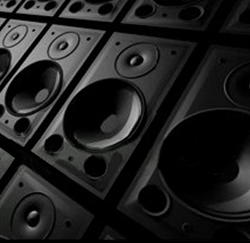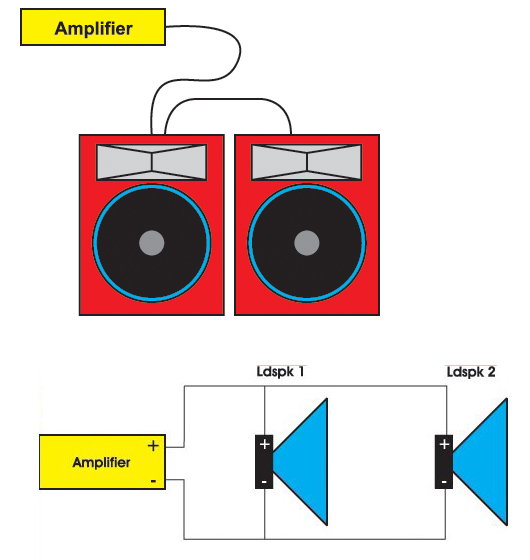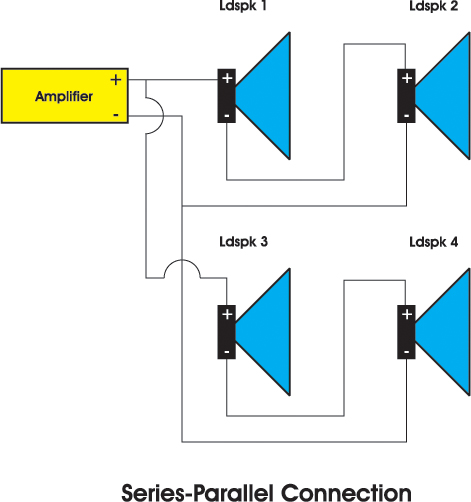
If they are the same impedance (the most common condition), the current through each will be the same.
The output voltage of the amplifier will be the same across each voice coil, since all “+” terminals are connected together and all “-” terminals are connected together.
The load increases (the total impedance gets smaller) as more loudspeakers are connected in this fashion.
Parallel connection is the preferred method for configuring a multiple loudspeaker system, because adding additional loudspeakers does not change the power flow (or loudness) through the existing loudspeakers.
The sound level from existing loudspeakers remains the same as additional loudspeakers are added.

Care should be taken to avoid overloading the amplifier – a condition that occurs when too many loudspeakers are paralleled. This produces a total impedance that is too low and draws excessive current from the amplifier.
When loudspeakers are “daisy-chained” they are being connected in parallel.
The interconnecting cable buses all of the “+” loudspeaker terminals together and all of the “-” loudspeaker terminals together.
This is often confused for series connection, but it is not since the current does not need to flow through one loudspeaker to get to the next.

An open voice coil in one of the loudspeakers will not produce a level change in the remaining loudspeakers, making this configuration ideal for distributed ceiling loudspeaker systems.
Series-parallel connection combines both of the above and is useful within loudspeaker enclosures to allow a target impedance to be achieved with multiple devices (i.e., dodecahedron loudspeakers, guitar amplifier cabinets, etc.).
It is sometimes employed to achieve an impedance value that would otherwise be too high if series connection alone were used, or too low if parallel connection alone were used.
This method works fine when used internally in a loudspeaker box (like a six 10-inch-loaded “guitar cabinet”), but should be avoided if the loudspeakers are to be distributed around a facility.
Such a system would be difficult to expand and difficult to service due to the non-standard method of connection.
